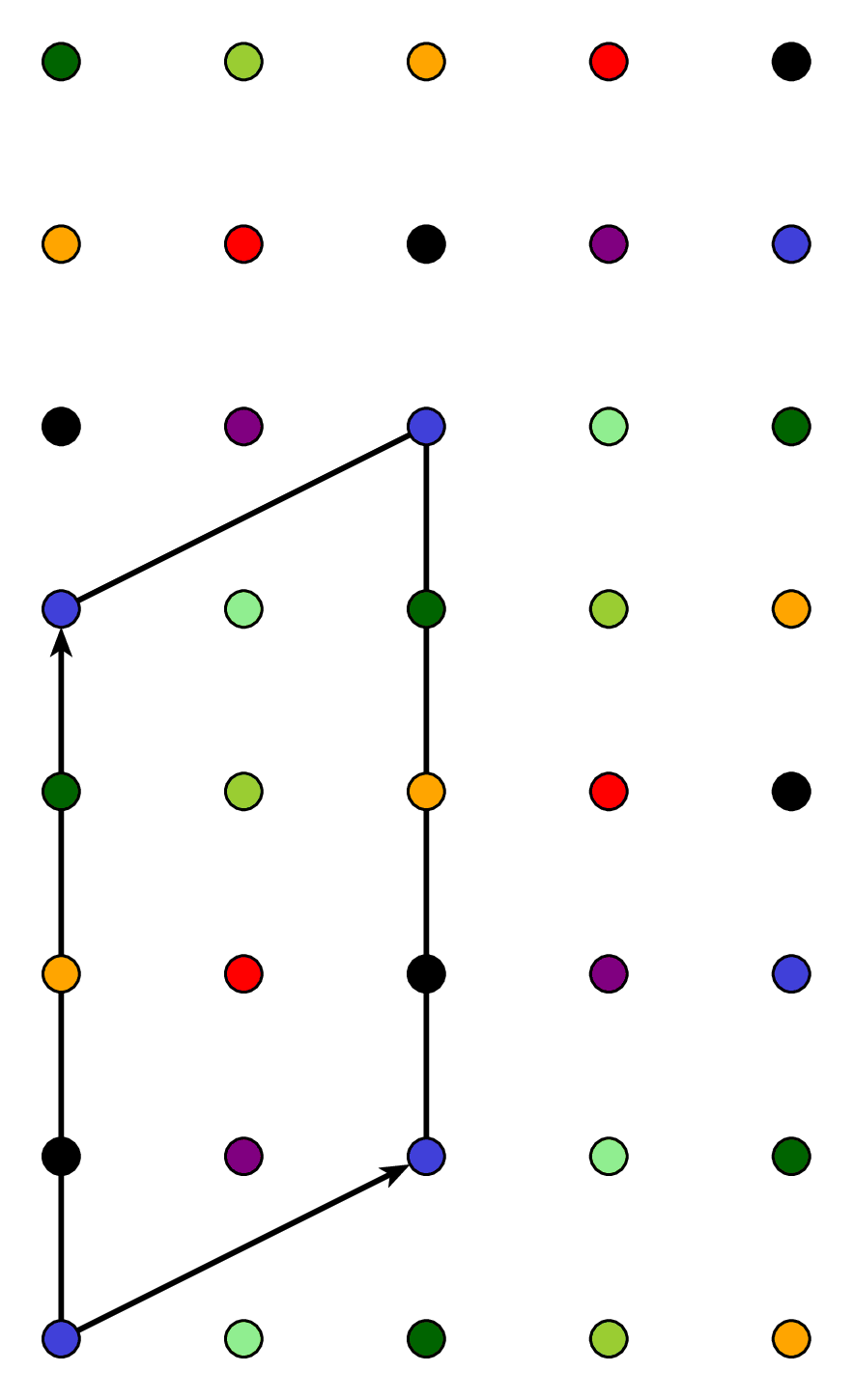Sublattice Points
Visualization of lattice points with basis vectors showing a fundamental domain. The points are colored to show the periodicity of the lattice, with points of the same color related by lattice translations. The arrows indicate the basis vectors that generate the lattice.

Download
Code
sublattice-points.typ (74 lines)